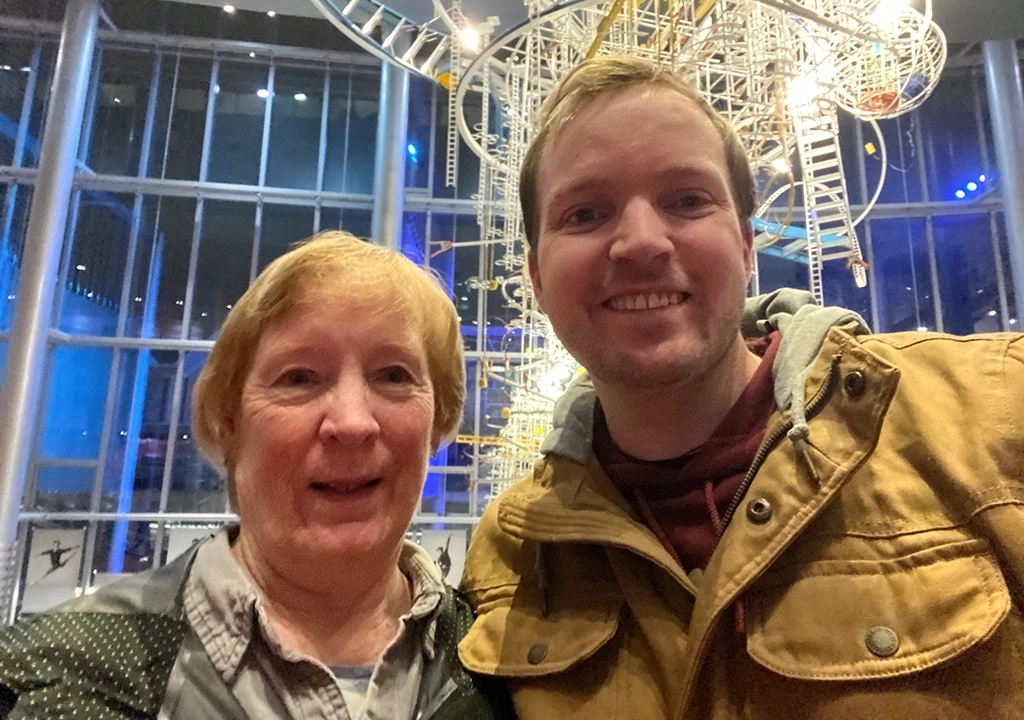
William’s journey to Seattle Children’s Hospital in 2010 began with a bruise. Then fatigue, weight loss, and a small doctor’s office in Dakar, Senegal. A routine blood test left his finger bleeding for nearly ten minutes.
It was the summer after William’s junior year of college. He was on the research trip of a lifetime, studying public health in rural West Africa. The plan did not include spending time in a Dakar hospital receiving near-constant blood and platelet transfusions.
He thought he had malaria. Or extreme exhaustion from the 120-degree heat. Things that made sense for a 20-year-old college student. Because cancer never does.
After an emergency medevac flight to Nuremberg, Germany, William met up with his mom, Eileen. An hour after they got to his bright hospital room, a polite doctor entered. He asked William a few questions, took a long breath, and then said a word nobody ever sees coming:
“Leukemia.”
William received more transfusions in Nuremberg and was strong enough to fly home commercially on the Fourth of July. While fireworks lit up the Seattle sky, he and his family huddled in his patient room talking about chemo, side effects, and his prognosis.
As night fell, William’s parents headed back to Whidbey Island—the first of hundreds of two-hour trips they would take to Children’s over the next few years. His many complications and surgeries kept him inpatient for weeks on end, including 292 days in 2011 alone.
That fall, when William began the stem cell transplant process, his doctors gave clear instructions: he had to stay within 30 minutes of the hospital. Going home to Whidbey wasn’t an option.
That was when Fred Wilkinson, a social worker at Seattle Children’s, connected them with the neighboring Seattle Ronald McDonald House, just a short walk from the hospital. It became a temporary home, a caring community, and the normalcy they needed.
“The Ronald McDonald House was a godsend for us,” Eileen said.
“Living on Whidbey, we couldn’t be close enough to the hospital when William was having his transplant, but the ‘ROMO,’ as we called it, was perfect. I don’t know what we would’ve done without it.”
One early morning, a month after William’s transplant, that short walk took on life-changing importance. At 2:00 AM, a nurse from Children’s called to say William had been moved to the ICU. Something was wrong with his heart.
Thanks to the Ronald McDonald House, Eileen was at her son’s side within 30 minutes to help make critical decisions about his care.
“I was so grateful to be able to be there that night,” she said, “and the Ronald McDonald House made that possible. That’s not the kind of thing you think about when your child has cancer, but on that night, it made all the difference.”
William’s family’s stay at the Seattle Ronald McDonald House lasted nearly a year. But their gratitude lasts far longer.
“When my transplant meant I couldn’t go home,” William said, “the Ronald McDonald House gave my family and me the next best thing. We had dinners together, Christmas without beeping pumps, and my cousins and friends got to visit in an actual home instead of a hospital room.”
“That little apartment gave us moments where it felt like cancer didn’t even come through the door.”
Editor’s note:
This personal story was written by a former resident who stayed at the Seattle Ronald McDonald House with his family in 2010. Now a communications professional, William is generously volunteering his time to help us reconnect with other families and share their stories.